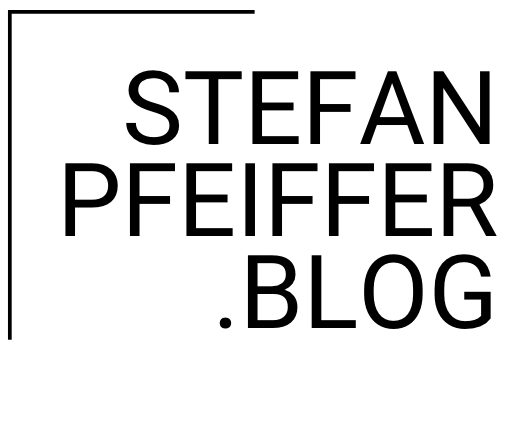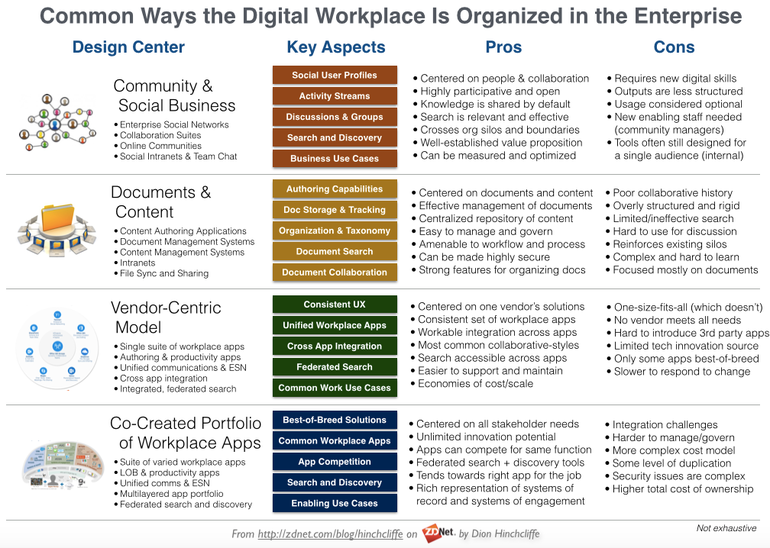While there are numerous ways of thinking about how to organize the digital workplace, in practice there seem to be three widely used models, with a fourth newer one that seems to be developing quickly, often in a very informal fashion.
Four Common Models for Organizing the Digital Workplace
What’s interesting about this list is that each model emphasizes one principle, activity, or type of artifact over all others. Examples include workforce collaboration, digital conversations, documents, the sourcing and management of workplace apps, or even just the desire to make a workable whole out of many, varied constituent parts that meets the most needs. These models are:
-
Community and social business. The second newest model on this list has been with us for some years, but it was not until very recently that it became a widespread one, with 65% of organizations at least having the requisite platforms in place this year (their usage and effectiveness is still emerging however.) This model puts people and their communication/collaboration in the very center of the digital workplace. Apps and their data certainly still have a place in this model, but in support of high value knowledge work within a situated context of open and participative shared value creation. There have been numerous measures of the effectiveness of this model, with McKinsey most famously claiming there is at least $1.3 trillion in untapped economic value to be had by moving to this model of working. Successfully realizing this type of new digital workplace generally requires updated digital skills in the workforce that inherently take advantage of its strengths.
-
The document and content-centric workplace. Many knowledge-based firms produce most of their value by capturing their ideas and results on what we used to call paper. Now this output has become almost entirely digital, and so these workplaces invest an inordinate amount in managing the vast digital document flows from their workforce using document and content management systems, such as SharePoint and Documentum. While the hey-day of document management and content management systems is largely behind us, it’s still one of the dominant models for the workplace, …
-
Vendor-centric model. After years of trying to avoid lock-out, I’m seeing a decided return to single-vendor dominance in the digital workplace in certain sectors. Major changes and improvements in the digital workplace offerings of dominant industry player Microsoft has a lot to do with this shift, and I’m seeing — especially with very large enterprises — an interest in getting an entirely ready-to-go, integrated, and supported set of digital workplace tools for communication, collaboration, documents, and productivity. …
-
A hybrid digital workplace co-created by IT, lines of business, and workers. The fourth model is the newest but fast emerging, but does now indeed appear to be one nearly inevitable outcome of current trends in tech adoption and IT. The proliferation of apps in the cloud and mobile devices has made IT extremely easy to acquire and nearly disposable for many uses. In fact, the best solutions can be quickly found and used by nearly anyone like never before, without permission or help from IT. This is creating an environment where the business, at the division, departmental, and even personal level selects technology with little to no formal involvement or ownership by IT. …
Source: What’s the organizing principle of today’s digital workplace? | ZDNet
Very interesting and thoughtful posting with a lot of correct observations. But how will the rise of Artificial Intelligence and Cognitive solutions impact the different scenarios. And I am talking about real AI solutions for business, not just rule-based chatbots.
(And I still believe, that a vendor centric approach is not going to succeed in the area of BYOD and BYOA and the younger generation moving away from a document centric approach.)



Kommentar verfassen